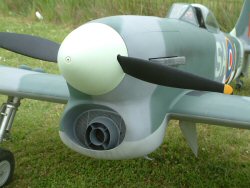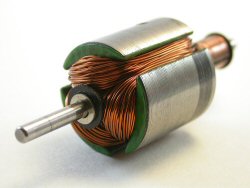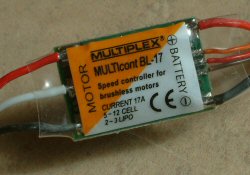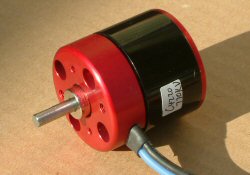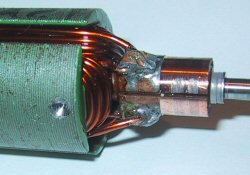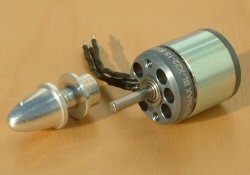|
|||
|
|
|
||
| View Shopping Cart |
| Home |
| Guides Available |
| About the Author |
| FAQs |
| Testimonials |
| Articles |
| Contact Andrew |
| Terms & Conditions |
| Mailing List |
| Links |
 |
 |
Get more great articles with every issue of Successful Electrics, the free magazine from Gibbs Guides
Learn more!
Electric Flight Glossary
& discussion of electric flight terms
Part 1 - A to D
by Andrew Gibbs
There are many technical terms and words relating to model aircraft in general, and electric flight in particular. The aim of this detailed glossary is therefore to offer an accurate and detailed yet concise explanation for any of the terms the electric modeller is likely to come across. Let us know if a term you'd like to see covered is not found here!
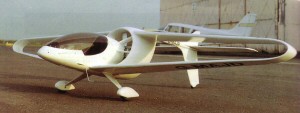
3-views
This term refers to line drawings showing the subject
airplane from three angles; from the side, from above
and from in front. Cross sections may also be provided.
AC
This is an abbreviation of Alternating Current. AC is
the type of electricity supplied to domestic households,
and is so called because, unlike direct current (DC),
the direction of the current constantly changes. The
output from a brushless ESC may be considered to be
AC, and is of course used to supply the motor. See also
DC.
Adverse Yaw
When any control is deflected, it will generate drag.
This is of particular importance for the ailerons because
the down going aileron is a particularly prone to generating
drag, and this can cause a phenomena known as adverse
yaw. For example, suppose we want to roll the model
to the right. A right aileron command will mean the
left aileron is lowered and the right one is raised.
Because the left hand aileron is going down, it will
generate more drag. If the left hand (down-going) aileron
produces a large increase in drag compared to the up-going
one, an airplane could have a tendency to yaw (nose
swinging to one side) to the left - this is the opposite
direction to the intended direction of turn. Remedies
for adverse yaw are to set the model up with differential
aileron, and to use the rudder along with aileron when
making a turn.
Aerofoil
This is the cross section through a wing. There are
many types of aerofoil.
Ailerons
The moveable control surfaces positioned towards the
outer edge of a wing. The left and right ailerons operate
simultaneously to give control of a model in roll -
one goes up, reducing lift while the other goes down
to increase lift.
Airscrew
This is the old fashioned term for a propeller. The
word is derived from the early concept that a propeller
‘screws’ its way through the air. See also
the glossary entry for propeller. Propellers are examined
in detail here
Aliphatic resin
A water-based, waterproof adhesive that is suitable
for bonding wood such as balsa and ply components. This
relatively low cost adhesive is also light in weight
and sands better than PVA.
Amps, Ampere
This is the unit of electric current. See the glossary
entry for current.
Armature
The armature is the name given to the assembly of all
moving parts of a brushed DC motor. The armature consists
of the motor shaft, the iron laminations, the coils
of wire which are wound around it and the commutator.
There is no armature in a brushless motor. Brushed motors
are discussed in more detail here
Propellers
used to be called airscrews in the early days of
aviation. This prop is attached to John Ranson's
fine Tempest. |
The
armature of a brushed DC electric motor. This example
comes from a simple 3-pole motor. |
ARF
(or ARTF)
This abbreviation is short for Almost Ready to
Fly. It describes many of today's RC electric model aircraft
which often require little more than basic assembly and
the installation of RC equipment.
Back EMF
Back EMF is the voltage, or electromotive force, generated
within a brushed or brushless motor by virtue of its rotation.
This voltage opposes the battery voltage, making the effective
voltage available to turn the motor lower. Brushless ESCs
are able to sense the back EMF and they use this information
to control the motor.
BEC (or UBEC, or SBEC)
BEC is short for Battery Eliminator Circuit, often pronounced
‘beck’. A BEC is an electronic device which
supplies power for a model’s RC system from the
motor battery. The BEC is entirely separate from the motor
control circuitry. It eliminates the need for a separate
receiver battery, giving rise to its name.
BEC Limitations
All electronic devices, including BECs have operating
limits. BECs are rated for a certain voltage, current,
or a number of servos that may safely be used. If these
limits are exceeded, the BEC may overheat, malfunction
and/or shut down. Any of these conditions will of course
cause a loss of control, so care must be taken to stay
within the rated capability of the BEC.
This
ESC includes an integrated BEC. Care must be taken
not to exceed the current rating of the BEC, otherwise
it may well overheat and shut down. |
This
Cermark CEM-4220-770 outrunner is rated for 40 Amps
continuous. The large holes make it easy to provide
a generous flow of cooling air through the motor. |
Black wire corrosion
Definition to be added...........
Burst current
The burst current is a measure of how much current a motor
can handle for a very limited period of time, for example
15 seconds. Brushless motors tend to be better than brushless
motors at handling a high burst current because they do
not have brushes which can become pitted at high currents.
Some manufacturers specify their burst current for up
to 10 or 15 seconds, others up to 60 seconds. Adhere carefully
to any such limitations.
In my opinion, if a motor is propped so it will only take full power for a limited period of time it is most definitely 'over-propped', in other words, the propeller is too large. Manufacturers probably like to have this rating as it makes their motors appear more powerful. For normal sport use, I recommend propping a motor only up to the rated maximum continuous current. This avoids the problem of forgetting to throttle back in a timely fashion to avoid excessive heating and possible damage.
C Rating
The 'C' rating of a battery is a way of defining the maximum
safe continuous current it can deliver, expressed as a
multiple of the battery's capacity in Amp-hours.
A current of 1 Amp may also be expressed as 1,000mA (milliamps). A 1,000mAh (or 1 Ah) battery can therefore supply a current of 1 Amp for one hour. This is known as the 1C current for this battery. Alternatively, this same battery could supply 2 Amps for 30min. This is the 2C current for this particular battery. The battery could also be discharged at 10 Amps which would mean it was empty in 6 min. This would be the 10C current.
Similarly, a 2,200mAh battery can supply 2.2 Amps for one hour. This higher current is the 1C current for this higher capacity battery. The 10C current would be 22 Amps and this would discharge the battery fully in 6 min.
The reason for placing a limit as to the maximum discharge current is because any time a current passes through a resistance (which includes the internal resistance of a battery) heat will be generated. Since excessive heat may cause damage, by limiting the current, the production of heat is also limited.
The C rating of a battery may be exceeded for a brief period, provided the battery is not allowed to become excessively hot. Care should also be taken to limit the discharge current (especially when the cells are approaching a discharged condition) to a value that prevents the battery from dropping below 3 volts per cell e.g. 9.0V for a 3-cell lipo battery. An important point to appreciate is that the voltage of a battery will fall when it is in use, for example when supplying power for a motor.
Canaliser
A canaliser is a small wing-like device sometimes fitted
to competition aerobatic models. It comprises a short
pylon on top of which a small wing is mounted. A canaliser
is typically located just aft of the canopy and its incidence
matches that of the wing. Pilots report that adding a
properly sized canaliser to a model makes the rudder more
effective. Canalisers are most often used on F3A models.
Information on how a canaliser functions is limited, but the device is believed to work by helping to smooth the airflow passing over the top over the model, before it reaches the rudder. The vertical side area of the canaliser's pylon, if significant, may also influence the effectiveness of the rudder.
Canaliser is a French word with the approximate meaning to direct or to channel. The device was invented by top French aerobatic pilot Christophe Paysant Le Roux.
The
C rating of a battery defines the maximum current
it can supply expressed as a multiple of its capacity. |
A
canaliser is a small wing-like surface generally
fitted aft of the canopy to an aerobatic model. |
Cogging
Cogging is the varying resistance to turning the armature
shaft caused by the magnetic field acting on the armature
iron. See also the entry for slotted/slotless motors.
Continuous current rating
The continuous current rating of a motor, measured in
amps, is a measure of how much current it can safely handle
on a continuous basis. The continuous current rating may
only be safely sustained if the motor has a sufficient
supply of cooling air.
Commutator, commutation
A commutator is a slip ring, or rotary electrical switch,
integral to a brushed motor. It performs the functions
of switching the current on and off in the various sections
of the armature windings, and also of reversing the polarity
(direction) of the current in those windings every half
a turn. In a brushless motor, the commutation function
is carried out by the ESC.
Copper Loss
This term refers to one of the causes of a loss of energy
in an electric motor. All conductors such as motor windings
have some level of resistance to electric currents. This
resistance causes a portion of the electrical energy passing
through the wire to be wasted as unwanted heat. This type
of resistance is known as copper loss.
A conductor carrying 10 Amps has only 1/4 the copper loss of that same conductor when it carries 20 Amps. So, doubling the current in a motor results in 4 times the heat generated due to copper loss. (In mathematical terms, we can say that the copper loss rises with the square of the current).
The
commutator of a brushed electric motor. The commutator
can get quite hot due to brush friction and the
electrical resistance between brushes and commutator. |
Brushless
motors, identified by 3 wires, do not have a commutator.
This function is carried out by the associated ESC
instead, without which the motor cannot run. |
Current
Current is the word used to describe the quantity of electricity
flowing through a wire. To visualise the flow of electricity,
it may be likened to water flowing through a pipe. Current
is measured in Amperes, often abbreviated to "Amps"
or just "A".
In electric flight, it is important to know the current drawn by a particular motor, battery and propeller combination. It is essential that the chosen ESC, battery and motor can all safely handle the current, otherwise components may become damaged.
DC
This is an abbreviation for Direct Current. All batteries
produce DC electricity, which flows in one direction only.
DC is so called because unlike AC, the direction of the
current is constant, like water flowing in a river. DC
is used for all model aircraft including brushless types.
See also the entries for AC, brushless motors and ESCs.
Differential Aileron
This term refers to ailerons that are set up so that the
up-going aileron has more movement than its downwards
going counterpart. This helps to combat adverse yaw. Many
models will benefit considerably from having differential
aileron movement.
Click here for the next part of the glossary
